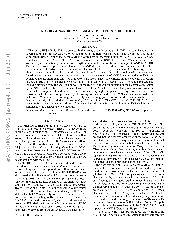摘要
The source HESS J1813-178 was detected in a survey of the inner Galaxy in TeV gamma-rays, and a composite supernova remnant (SNR) G12.8-0.0 was identified in the radio band to be associated with it. The pulsar wind nebula (PWN) embedded in the SNR is powered by an energetic pulsar PSR J1813-1749, which was recently discovered. Whether the TeV gamma-rays originate from the SNR shell or the PWN is currently uncertain. We theoretically investigate the multiwavelength nonthermal radiation from the composite SNR G12.8-0.0. The emission from the particles accelerated in the SNR shell is calculated by applying a semianalytical method to the nonlinear diffusive shock acceleration mechanism. In the model, the magnetic field is self-generated via resonant streaming instability, and the dynamical reaction of the field on the shock is taken into account. Based on a model which couples the dynamical and radiative evolution of a PWN in a non-radiative SNR, the dynamics and the multiband emission of the PWN are investigated. The particles are injected with the spectrum of a relativistic Maxwellian plus a power-law high-energy tail with an index of -2.5. Our results indicate that the radio emission from the shell can be reproduced well as synchrotron radiation of the electrons accelerated by the SNR shock; with an interstellar medium number density of 1.4 cm(-3) for the remnant, the gamma-ray emission from the SNR shell is insignificant and the observed X-rays and very high energy (VHE) gamma-rays from the source are consistent with the emission produced by electrons/positrons injected in the PWN via synchrotron radiation and inverse Compton scattering, respectively; the resulting gamma-ray flux for the shell is comparable to the detected one, only with a relatively larger density of about 2.8 cm(-3). The VHE gamma-rays of HESS J1813-178 can be naturally explained to mainly originate from the nebula, although the contribution of the SNR shell becomes significant with a denser ambient medium.
- 出版日期2010-7-20
- 单位云南大学
